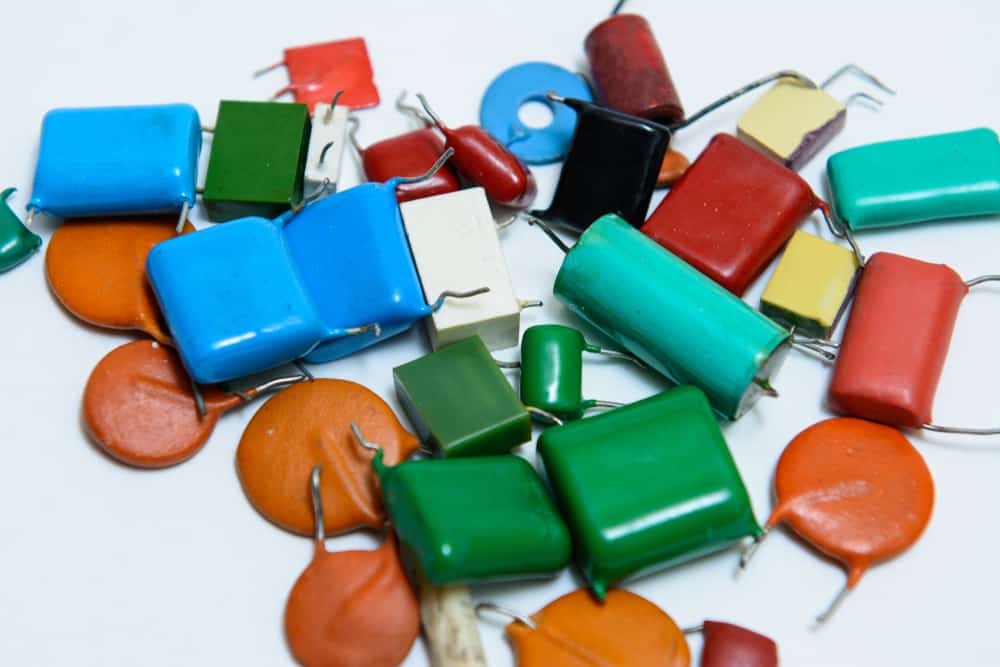
Example of discrete-passive components
Without a doubt, the most crucial decision that you make when designing circuit boards is which components to use. Of course, satisfying performance criteria is important to ensure your circuits operate as desired. However, other considerations should inform your choices for parts.
For example, how your part type affects power, grounding, and other PCBA layout decisions, which will depend upon whether you use discrete-passive, discrete-active, or discrete vs passive components.
What Are Discrete Components?
When first learning about electronic circuit theory and fundamental concepts, such as Ohm’s Law and Kirchoff’s voltage and current laws, you probably recall studying circuits containing a power or current supply and a single load. The load, whether a resistor, capacitor, or coil, is an example of a discrete component, which allows us to put forth the following definition.
| Definition:
For circuit boards, a discrete component can be defined as a package—through-hole or SMD—that contains a single component or electrical/electronic device. Discrete components can be passive or active. |
Although many components are integrated circuit or IC packages—meaning multiple components are contained in a single package—discrete components are still widely utilized on virtually all PCBAs.
What to Know About Passive Electronic Parts?
Different passive components
Some common passive components are shown in the figure above. It is atypical for electronic parts to be classified in this group—parts that do not generate power or electrical energy—or active—require a power source and can change the power of an applied signal. Examples of passive components are:
Types of Passive Components
- Capacitor
- Stores electrical energy
- Blocks DC and passes AC
- Used for coupling signals
- Can be used as a switch for electrical energy
- Resistor
- Dissipates electrical energy
- Used for voltage/current division and controlling power transfer
- Inductor
- Acts as a short for DC current
- Used for coupling magnetic energy
- Transformer
- Used to change voltage/current levels
- Used to isolate circuits
- PN Junction Diode
- Used as a unilateral current flow switch
The list above includes commonly used passive components, which do not require separate excitation to function as active components—for example, Op-amps, relays, and transistors—and how they are applied. It is essential to understand function and usability when choosing components and how they will affect the options for your board layout.
Discrete vs Passive Components PCBA Layout Guidelines
When designing your PCBAs, component selection and board layout are primary activities that must be integrated to ensure functionality, operation, and manufacturability. And your choice of discrete vs passive components significantly influences your component placement, trace routing, and stackup. Therefore, you should incorporate the following into your part selection decisions.
Layout Factors for Choosing Discrete vs Passive Components
- Active discrete components require power and ground routes
Active components of all types require separate power and grounding to process applied signals. For SMDs, this will inform the number, types and location of vias, layers and ground planes. - Passive discrete components may be major sources of EMI
Caps, coils, and transformers are used in AC or RF circuits and do create electromagnetic fields. Depending upon energy levels, these components can be sources for EMI problems on your board and/or EMC issues in your system. Therefore, it is critical that component and trace spacing be adequate to minimize interference with other signals. - Using active discrete components can lead to complex routing
It is certainly true that ICs are more likely to be a source of thermal issues, such as hot spots and unbalanced heat distribution. However, active discrete packages require several traces that must meet clearance and spacing criteria. This can result in very dense and complex routing.
Knowing and incorporating the above will help you make the best passive component choice for your design. And when choosing common discrete passive components, you should look to the electronic part industry’s global leader, Vishay Intertechnology, for the highest quality and performance.
If you’re looking for CAD models for common components and need to compare discrete vs passive parts, for example, Ultra Librarian helps by compiling all your sourcing and CAD information in one place.
Working with Ultra Librarian sets up your team for success to ensure streamlined and error-free design, production, and sourcing. Register today for free.